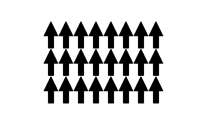
Photo from wikipedia
Abstract In this work, a series of low-temperature-firing (1−x)Mg2SiO4–xLi2TiO3–8 wt% LiF (x = 35–85 wt%) microwave dielectric ceramics was prepared through conventional solid state reaction. X-ray diffraction (XRD) and X-ray photoelectron spectroscopy… Click to show full abstract
Abstract In this work, a series of low-temperature-firing (1−x)Mg2SiO4–xLi2TiO3–8 wt% LiF (x = 35–85 wt%) microwave dielectric ceramics was prepared through conventional solid state reaction. X-ray diffraction (XRD) and X-ray photoelectron spectroscopy (XPS) analyses showed that the Li2TiO3 phase was transformed into cubic phase LiTiO2 phase and secondary phase Li2TiSiO5. Partial substitution of Mg2+ ions for Ti3+ ions or Li+Ti3+ ions increased the cell volume of the LiTiO2 phase. The dense microstructures were obtained in low Li2TiO3 content (x ≤ 65 wt%) samples sintered at 900 °C, whereas the small quantity of pores presented in high Li2TiO3 content (x ≥ 75 wt%) samples sintered at 900 °C and low Li2TiO3 content (x = 45 wt%) sintered at 850 and 950 °C. Samples at x = 45 wt% under sintering at 900 °C for 4 h showed excellent microwave dielectric properties of er = 10.7, high Q × f = 237,400 GHz and near-zero τf = − 3.0 ppm/°C. The ceramic also exhibited excellent chemical compatibility with Ag. Thus, the fabricated material could be a possible candidate for low temperature co-fired ceramic (LTCC) applications.
Journal Title: Ceramics International
Year Published: 2017
Link to full text (if available)
Share on Social Media: Sign Up to like & get
recommendations!